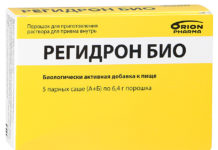In Soviet times, chestnut trees were planted along urban alleys and highways to absorb smog and carbon dioxide. Few people know that ordinary horse chestnut, whose medicinal properties and contraindications will be discussed below, is used not only by traditional medicine healers. An extract from parts of a plant is part of some medicinal medicines.
Material Content:
Horse chestnut: medicinal and beneficial properties
The tree has a wide palette of effects on the body. This effect is due to the constituent ingredients of horse chestnut.

It includes:
- Tannins - have a protective and astringent effect;
- Vitamin C - helps eliminate inflammation, strengthens defenses;
- Vitamin K - prevents hemorrhages, strengthens the walls of blood vessels;
- Coumarin - heals wounds, lowers blood coagulation;
- Pectins - remove toxic substances, suppress the pathogenic flora in the intestine;
- Carotene - protects the body from carcinogens, prevents cardiovascular disease.
In addition, the plant contains many other healing elements, such as flavonoids, organic acids, globulin lecithin, fatty oils, B vitamins, minerals.
An extract from flowers, leaves, fruits is used to cure many ailments.

The following properties of horse chestnut have found application in alternative and official medicine:
- Anti-inflammatory and analgesic;
- Decongestant and diaphoretic;
- Venotonic, antithrombotic;
- Antipyretic, bactericidal;
- Antitumor, antioxidant;
- Antisclerotic;
- Astringent, wound healing;
- Hemostatic.
Traditional healers prepare horse chestnut tinctures, ointments, decoctions. In order for the prepared medicine to turn out to be safe and effective, the procurement of raw materials cannot be carried out in the city or in radiation areas.
Leaves and flowers should not be damaged by insects, the bark must be selected without mold. Drying parts of the plant is necessary in a well-ventilated room, avoiding direct sunlight, so as not to spoil the quality of the raw materials.
Benefits in various diseases
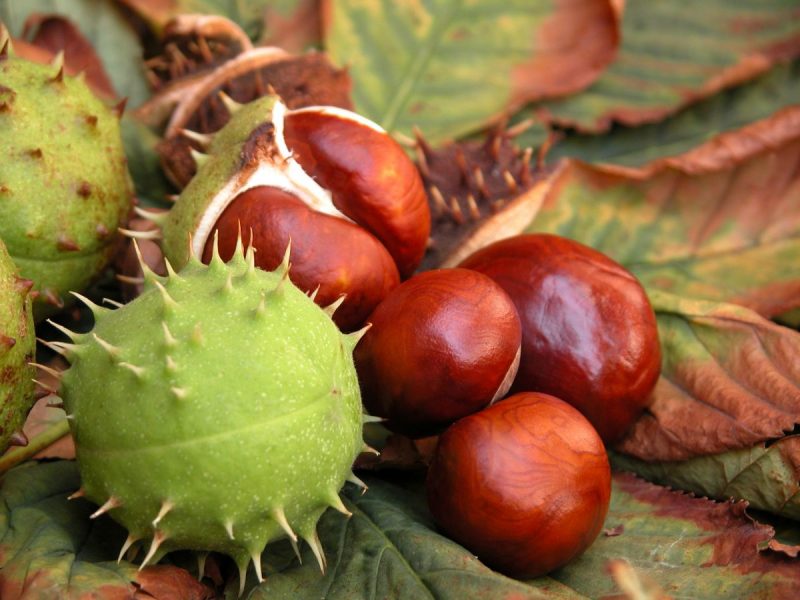
The beneficial properties of horse chestnut apply to a large number of diseases. The tree, first of all, is appreciated for the ability to normalize the protein formula of the blood, preventing thrombosis. Horse chestnut is used to treat high blood pressure, nosebleeds, varicose veins, hemorrhoids, and hemorrhagic diathesis.
Read also: treatment of varicose veins on the legs with folk remedies
Flowers
The tree begins to bloom in May. It is in this period after a long winter, when the body is most weakened, with the help of chestnut flowers, immunity can be significantly increased. The restorative effect is exerted by juice from fresh flowers.
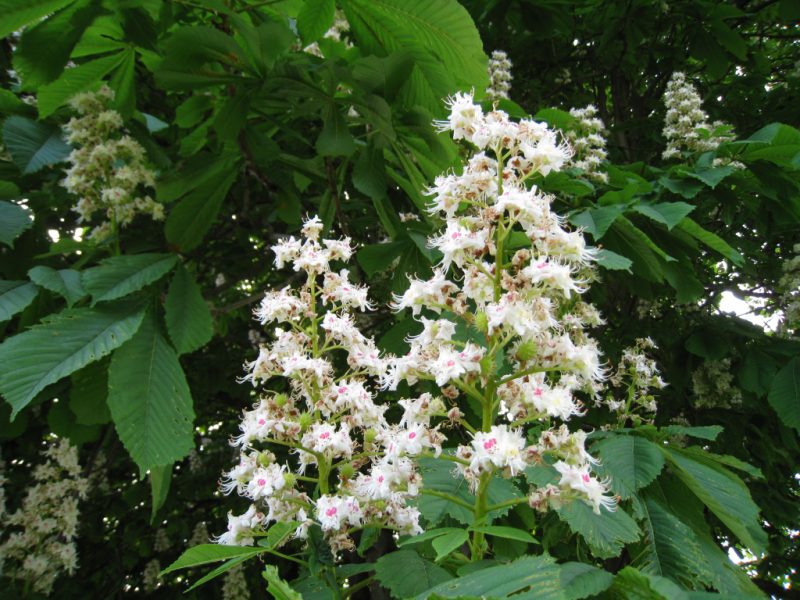
The flowers must be chopped with a blender or in a meat grinder, squeeze the juice. You need to take such a medicine 30 to 35 drops half an hour before a meal three times a day. In addition, fresh juice helps with varicose veins, thrombophlebitis, hemorrhoids.
The medicine has one big drawback, its use is limited to the flowering season. But in this situation, you can find a way out. Flowers need to be dried for the future. After drying, tinctures, ointments are prepared from the flowers, which are used to treat trophic ulcers, endarteritis, prostate adenoma, uterine bleeding, and radiation sickness.
Leaves
The foliage of the plant has an analgesic and anti-inflammatory effect. These properties are used for inflamed veins in the legs, trophic ulcers on the lower leg, with spasms of blood vessels, venous stasis.
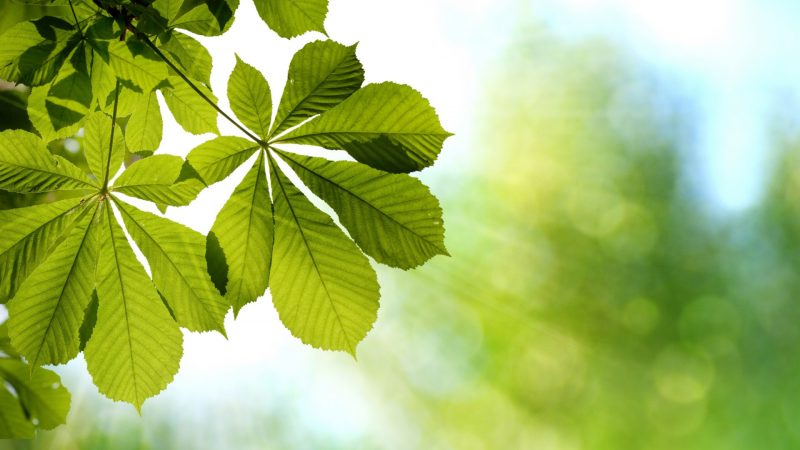
- Medicines are prepared from the leaves, which normalize the water and salt balance, which is necessary in the treatment of rheumatism, gout.
- Broths and infusions from horse chestnut leaves treat respiratory organs for colds, such a remedy helps with bronchial asthma, bronchitis, tracheitis, pulmonary tuberculosis, pneumonia.
- The leaves have a calming effect on the nervous system, normalize sleep, facilitate the process of falling asleep, and eliminate signs of stress.
Diuretic action is used for urinary tract ailments, as well as for edema of various origins.
Fruit
Assembling a chestnut occurs in late summer or early fall. After harvesting, the fruits are dried, crushed, insisted or boiled, sometimes used fresh. Processing depends on the purpose of use.

Fruits contain fatty oils, tannins, a large amount of starch. The therapeutic effect is based on the ability to have an antioxidant, anti-edematous, astringent effect. The fruits of the chestnut include in the treatment of long non-healing wounds, burns, trophic ulcers.
Dried crushed walnut kernels by folk doctors are used to treat weeping erosion. Tinctures and ointments, which include chestnut fruits, help with joint pain, sore muscles, salt deposition, arthritis.
Bark
The bark is collected in the autumn months, at which time it is saturated with the largest number of healing components. The bark on the trunk and on young branches contains escin, tannins, glycosides, fatty oily substances.
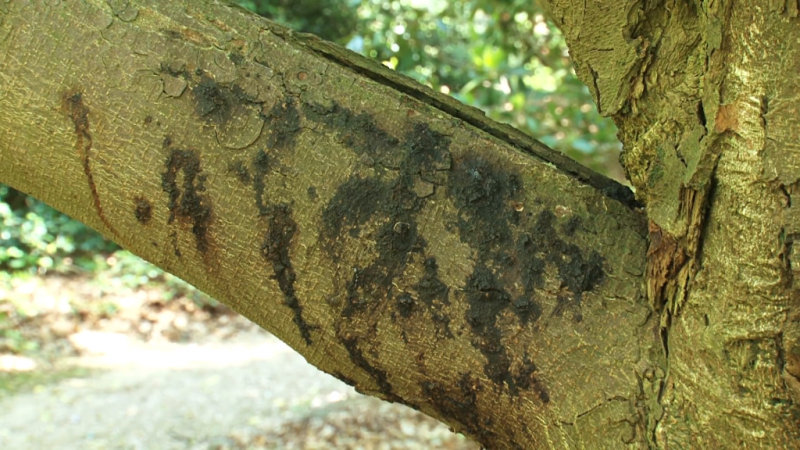
The use of chestnut bark is based on tannic and astringent properties:
- dental infections;
- diseases of the upper respiratory tract - prescribe rinses;
- candidiasis, cervical erosion, vaginitis-infusion and diluted broth is used for douching;
- hemorrhoids - sitz baths with a decoction of the bark are used.
Rinsing and douching achieve the establishment of natural flora, while pathogenic microorganisms die. The mucous membrane is restored, the inflammatory reaction is removed, pain is eliminated.
An aqueous infusion of bark or a bunch of flowers is used for diseases of the gastrointestinal tract: gastritis, ulcers, inflammation of the spleen, diarrhea, liver and gall bladder diseases.
The use of horse chestnut
Horse chestnut has found its application not only for the treatment of diseases, but also in cosmetology. The plant received such use due to its mineral and vitamin substances. The plant helps to fight inflammatory reactions on the skin of the face, the whole body. Skin cells are enriched with beneficial trace elements, delaying aging.

In addition to medicines, other chestnut-based products are highly valued. For example, chestnut honey is the best natural antibiotic, destroys pathogens, easily fights colds and flu, and boosts immunity. Among other things, you can easily cook chestnut kvass, which is made from fruits or flowers. This drink has healing properties and a pleasant taste.
Tincture
You can prepare the tincture yourself or buy a ready-made option at the pharmacy.
- 100 g of peeled fruit is ground to a powder;
- pour vodka so that the raw materials are completely immersed;
- insist 21 days in a darkened place;
- drink 10-12 drops twice a day.
The product is prepared from dried flowers, leaves, from the green peel of the fruit. In addition, the medicine at home can be made on a water basis. Such a tincture of chestnut has an antioxidant effect, accelerates metabolic processes, and is often used to lose weight and eliminate the symptoms of menopause.
Extract
You can extract useful substances from horse chestnut using the maceration method. The extract is prepared from both dry flowers and fresh ones.
- 6 table. l raw materials pour 1 liter of water;
- bring to a boil, but do not boil;
- cover, insist 12 hours.
With fibrotic mastopathy, a tendency to bleeding, hemoptysis, it is necessary to drink the infusion per day, in small sips every hour.
The finished pharmacy extract is available in 50 ml bottles, the indications for use are described in detail in the instructions. More often, chestnut extract is prescribed for cramps in calves, lower limb severity, trophic disorders, venous veins. The tool is also used in the complex treatment of edema after surgery or after an injury.
Decoction
For outdoor use, decoctions are prepared from all parts of the tree, but in most cases they take bark, young branches or fruits.
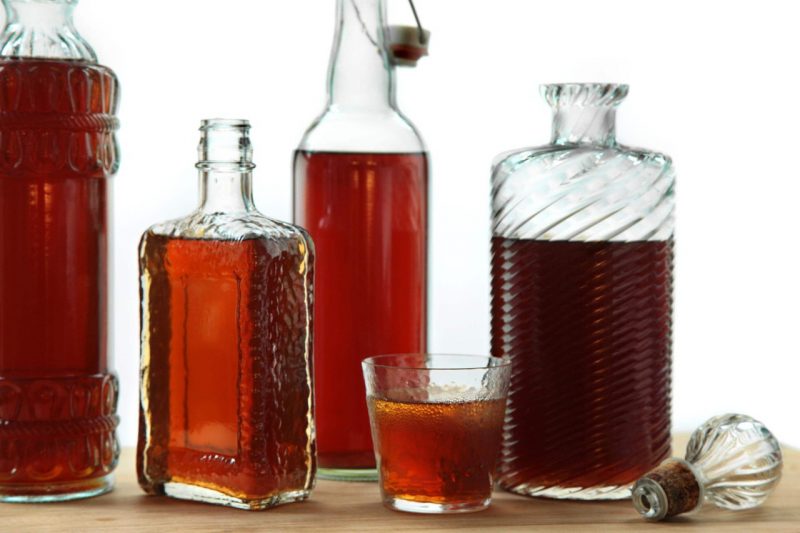
- grind the dried raw materials in a coffee grinder;
- 100 g of the mixture must be filled with 1.5 liters of water;
- bring to a boil, boil for half an hour over low heat;
- insist until completely cooled.
Sitting baths with a decoction have a painkiller effect for hemorrhoids, normalize the microflora in inflammatory ailments of the female genital tract. Trophic ulcers are washed with warm broth.
A decoction of the leaves and flowers of the chestnut is taken orally during the deposition of salts, gastrointestinal diseases, rheumatism, vascular spasms, inflammation of the respiratory tract. In some regions, decoction protect the skin from sunburn and treat dermatological problems.
Ointment
If you take any greasy base, you can prepare an ointment from parts of a chestnut.
Such a recipe deserves attention:
- melt in a water bath 200 g of lard;
- put 5 chopped fruits and some chestnut flowers;
- bring to a boil, stir constantly;
- dip 20 g of beeswax into the hot mixture.
When the wax melts, strain the ointment and store on the shelf of the refrigerator. Chestnut ointment relieves muscle tension, improves blood circulation in the legs, increases skin elasticity, relieves swelling.With varicose veins, ointment massages the limbs in the direction from the bottom up, first the feet, then the knees.
Oil
The ability of the oil to reduce the subcutaneous fat layer, edema, smooth wrinkles is used for puffy face, second chin, bags under the eyes. Wipe the skin with oil twice a day.
Horse chestnut is included in many venotonic creams - 911 balm, Venoton gel, Venitan ointment. Such ointments and creams strengthen the walls of the capillaries, prevents blood stasis, reduces inflammation and swelling.
The technology for making chestnut oil at home is quite simple:
- Several fruits and flowers are crushed to a powder;
- Pour in any liquid unrefined vegetable oil;
- They put in a water bath, languish 1 hour after boiling.
The oil is allowed to cool, then filtered through layers of gauze. Chestnut oil is used as a tool for massage, as well as for the preparation of masks for the body, face, hair.
Contraindications
Due to its natural composition, a medicine from various parts of horse chestnut is used for various diseases. But, despite the naturalness of the remedy, there are still contraindications.
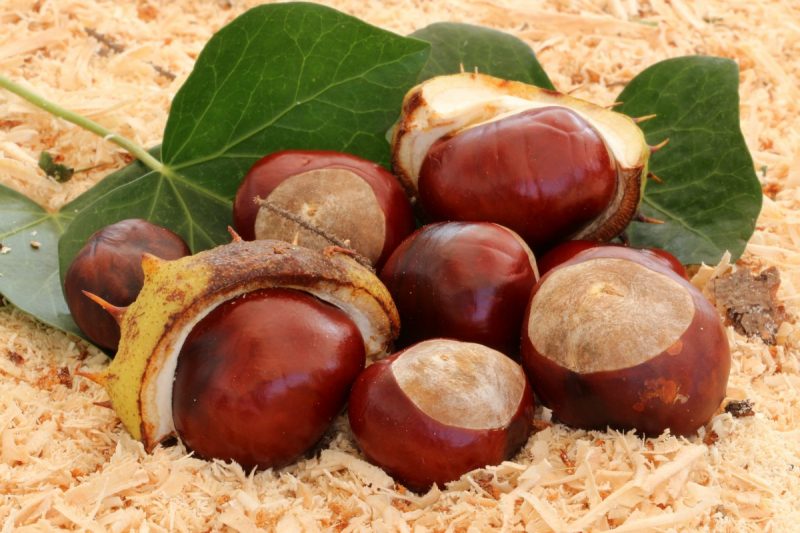
- Pregnancy and lactation.
- Failure of the menstrual cycle.
- Atony of the intestine.
- Low pressure.
- Chronic diseases of the kidneys and liver.
- Children under 14 years old.
Contraindications are mainly associated with the ability to thin the blood. If horse chestnut pharmacy is used, you must first consult your doctor.







